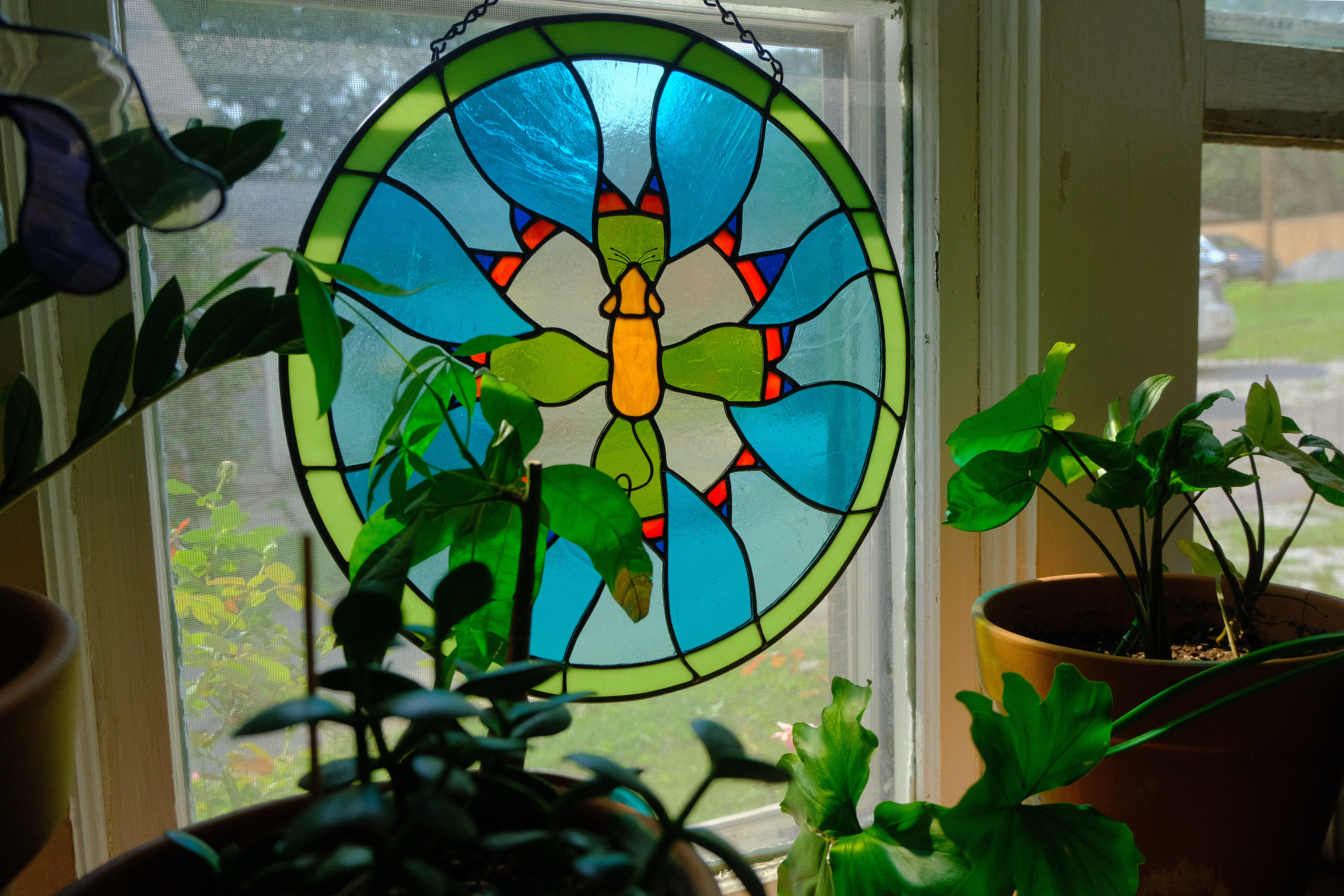Karl Templeton: A while back, Malory was in grad school to become an ecologist. She was spending a lot of time observing wildlife in the Mojave Desert.
One day, she was walking around an art market when a stained-glass artist piqued her interest. It was the first time she had seen someone work with this medium, not in a cathedral, but simply stand-alone pieces made of glass.
Malory Owen: So I spent a lot of time in my apartment by myself, not doing anything else, just getting obsessed with the glass. And I wouldn’t really recommend that to anyone else, I would say you’re definitely gonna wanna take a class maybe, that way you don’t waste a ton of money and time on things that- you know figuring it out in the moment.
Karl Templeton: Malory Owen is the artist behind Little Tiger Glassworks here in Bloomington. As a science communicator, she wants to tell the stories of the ecological world through stained-glass art.
An extinct species of mice, known as the Bramble Cay Melomys, is the subject behind one of her pieces, which grapples with feelings of loss and grief. These mice lived in habitats called Cays which are small, low-elevation islands that sit on the top of coral reefs.
Malory Owen: They are endemic meaning they’re only found in the Bramble Cays off the coast of Australia, and they were first mammals that went extinct due to climate change. The cays that were on were lost to sea level risings. So, all of that species was lost. And there had been a lot of warnings about it before. A lot of scientists had been saying “hey, we’re gonna lose this species if you don’t something about this now if we don’t take efforts” and no efforts were taken and there [was] nothing we could see at that time that prevented that loss. So, I do have a piece trying to memorialize them in a sense.
Karl Templeton: Malory thinks it’s important to process the grief that comes with losing species. Even in Bloomington, she’s noticed there are fewer bugs than before. Tornado seasons here are getting more intense, even the rain.
Malory Owen: Just things like that are in our own community, we’re having to grieve the loss of these species and with climate change is giving space for that grief or taking the time to acknowledge that and to memorialize it. If it’s not over certainty, we’re not gonna just give up and things will come back no matter what happens. I think that being a conservation biologist in any degree, at any level, or communicating ideas about conservation means that you’re to have to acknowledge how much pain has already been happening and how much loss. So, that is definitely something for me that I’ve been processing- a way to help me process it is by trying to make something that helps let people know about this grief that they are probably feeling in some capacity in their own lives even they aren’t familiar with the Bramble Cay Melomys specifically.
Karl Templeton: This piece is a good example of the ethos of Malory’s work as an artist and science communicator.
Malory Owen: The idea of stained glass, specifically as a storytelling medium for sacred stories. So stained glass, we of course all think of cathedrals, and we all think of sacred spaces where you're telling a parable from the Bible or something like that. And it's really easy for me to see the link between stained glass and sacred stories and the sacredness of our environment and of ecological systems. And I think that a lot of people actually do. If you spend a little time and you look closely, you know even people who are not necessarily super connected or haven't had that opportunity to be connected. It's really deep in us, in our humanness to be able to be like, “Oh, this is something beautiful.” I mean, when I think about what ecological niche humans provide, it's kind of land stewardship. It's going to be trying to help keep our land functioning well to support a biodiverse system that keeps everyone as healthy and safe as possible.
Karl Templeton: Malory wants to emphasize the importance of ecological stories through her art. Stained-glass is the perfect avenue for her to channel those emotions she feels towards the ecological stories she wants to tell, and this eye-catching medium is the perfect way to captivate her audience.








 Her piece on an extinct species of mice known as the Bramble Cay Melomys, grapples with the feelings of loss and grief that come when losing species. She’s always felt a strong connection to the natural world, and she hopes her art can make that connection for her audience too.
Her piece on an extinct species of mice known as the Bramble Cay Melomys, grapples with the feelings of loss and grief that come when losing species. She’s always felt a strong connection to the natural world, and she hopes her art can make that connection for her audience too.